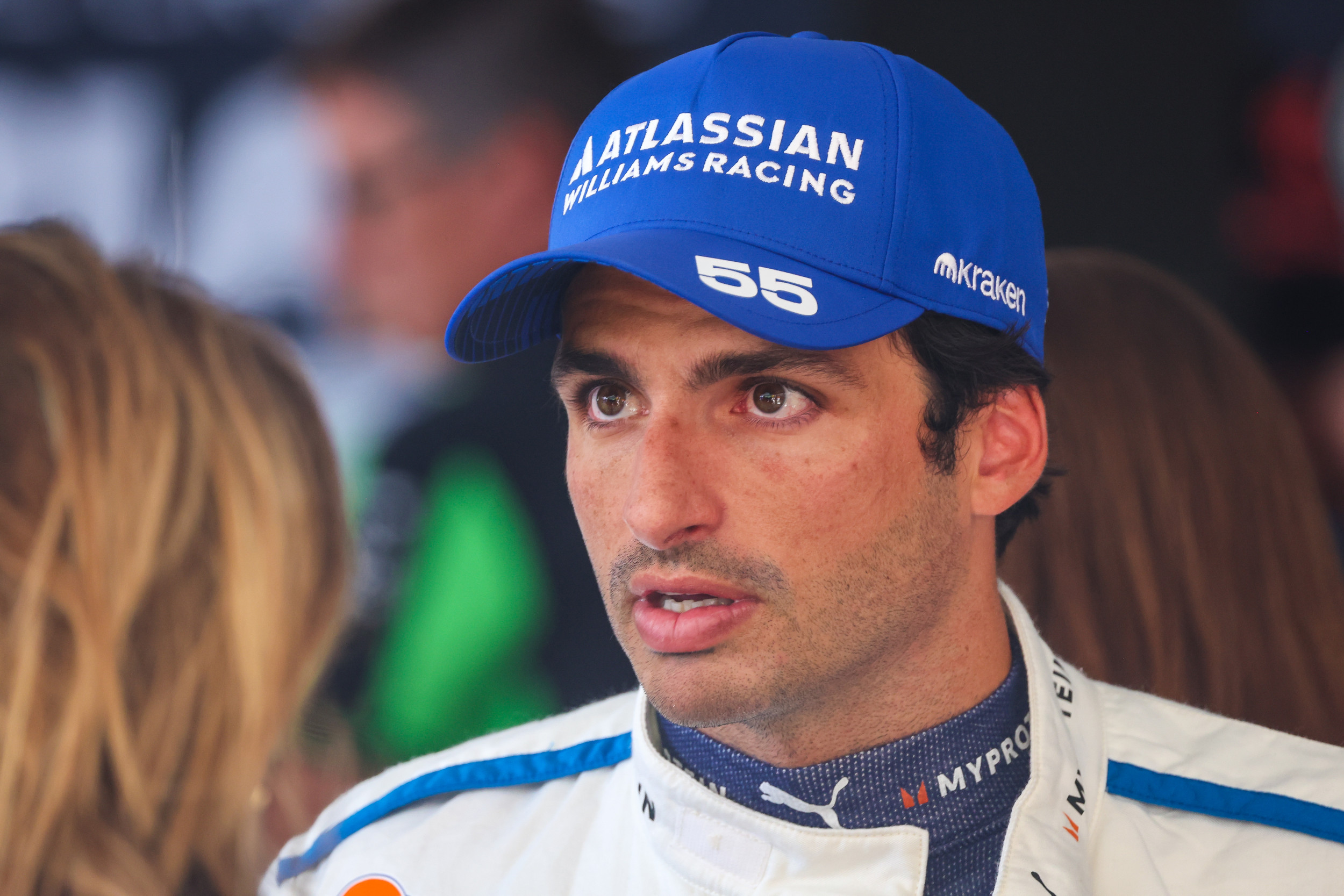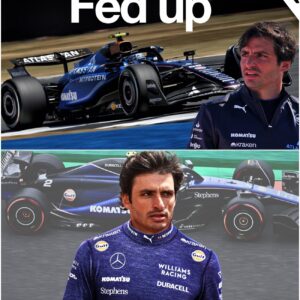Carlos Sainz and Williams: From Revival Hopes to a Disheartening Reality in 2025
Carlos Sainz’s 2025 Formula 1 season was supposed to be the bold beginning of a new chapter—a symbolic and strategic move from a top team like Ferrari to a legacy squad in rebuilding mode. When Williams, the once-dominant F1 giant, secured Sainz’s signature after his Ferrari exit to make room for Lewis Hamilton, it was seen as a statement of intent. Sainz, a proven race winner and consistent top-tier performer, had chosen belief over prestige. But halfway through 2025, that calculated risk is fast becoming a season he’d rather forget.

A Promising Partnership Undermined
Williams, under the leadership of team principal James Vowles, made Sainz the centerpiece of their long-term revival plan. After finishing second-to-last in 2024, the team convinced Sainz of its trajectory, technical plan, and culture shift. The project looked credible on paper, and Sainz was touted as the driver who could spearhead Williams’ return to competitiveness. Yet, as the first half of the season played out, the reality has failed to match the rhetoric.
Instead of challenging the upper midfield, Sainz has found himself grappling with a string of misfortunes, underperformance, and growing frustration. He trails teammate Alex Albon significantly—both in points and consistency—despite believing that the car’s performance has actually exceeded expectations. Williams sits firmly in the midfield battle, but Sainz has been unable to capitalize.
The Numbers Tell the Story
Sainz sits 15th in the drivers’ standings with only 13 points, while Albon has soared to 8th with 46. This is not just a points gap—it’s a psychological gulf that has widened with each race. Albon, likely exceeding internal expectations, has consistently delivered results. Sainz, meanwhile, has faced setbacks both in and out of his control.
He’s scored points in just six of twelve races, with eighth being his highest finish. From crashing in the wet in Australia, suffering accident damage in Bahrain, to not even starting the Austrian Grand Prix due to a brake failure-induced fire—Sainz’s campaign has been littered with incidents that have derailed any momentum. At Silverstone, a wet-weather incident involving former teammate Charles Leclerc forced Sainz off track, costing him valuable points in a race he believed was going his way.
After that race, an exasperated Sainz said, “I welcome this two-week break to see if something changes in my life so we can start having an F1 season because this has been everything but good so far.” It was a rare emotional admission from a usually composed driver, highlighting the emotional toll the season has taken.

Margins and Misfortune
Statistically, the gap between Sainz and Albon is small but consistent. Albon has reached Q3 seven times compared to Sainz’s five. The Thai driver has only been knocked out in Q1 once (due to a missed FIA call in Bahrain), while Sainz has three Q1 exits in the last five races alone. Though many of these qualifying exits were marred by traffic, damage, or reliability issues, the pattern is clear—Albon has the edge.
On average, Albon has been about 0.04 to 0.07 seconds faster across qualifying segments, a tiny difference that becomes decisive in F1’s tightly packed midfield. In head-to-head qualifying sessions, Albon leads Sainz 13–10—a close battle, but one where the Spaniard’s recent trend is worrying. He has been slower in six of the last seven sessions they both completed, with his deficit creeping past two-tenths of a second.
The Car, The Fit, The Decline
Sainz has openly admitted he’s still adapting to the Williams car. The long-corner performance—especially under braking and steering load—has exposed limitations that clash with the driving style he refined at Ferrari. His efforts to recalibrate have yielded inconsistent returns, including a baffling drop-off in Monaco qualifying.
But this isn’t all on Sainz. Williams’ performance curve has sharply dipped since a promising start. The first eight races yielded 54 points—more than double any other midfield team. Sainz trailed Albon 42–12 in this period, but had reason to feel he was unlucky not to score more due to damage and strategy mishaps.
However, since the Spanish Grand Prix in June—coinciding with a clampdown on flexi wings—Williams has faltered. Whether the regulation change directly affected them is unclear, but results have dried up. Tire prep issues, brake cooling problems (especially on Sainz’s car), and reliability troubles have plagued the team. At the same time, rivals like Aston Martin and Sauber have surged thanks to aggressive upgrade packages, including Nico Hülkenberg’s stunning Silverstone podium.

Strategic Trade-offs and Long-Term Bets
Williams knew 2025 would be a transition year. The team made an early pivot to develop its 2026 car around new technical regulations, choosing long-term gain over short-term glory. It was a calculated risk, but one that’s hurt their current form. As the rest of the midfield brings upgrades, Williams has stood still by comparison.
There is one final major update coming, but whether it can restore the team’s early-season form is uncertain. More importantly, for that update to have impact, both the car and drivers—especially Sainz—must be operating at their best. That simply hasn’t happened often enough.
What Comes Next?
Carlos Sainz’s struggles don’t mean he’s lost his edge. He remains a driver capable of elite performances, but his Williams debut has become a case study in how even the best-laid plans can unravel under the weight of racing’s unpredictability.
For Williams, Sainz was a coup. For Sainz, Williams was a chance to lead a project, shape a team, and prove he didn’t need a red car to contend. Both still have time to fulfill those ambitions. But unless fortune, reliability, and performance align soon, 2025 could be remembered not as a revival—but a missed opportunity for both parties.
The next half of the season will be critical. Whether Sainz can recalibrate, and whether Williams can reassert its competitiveness, will determine if this partnership becomes the fairytale comeback story it promised—or just another chapter of unfulfilled potential in F1’s turbulent history.
Full Video:
